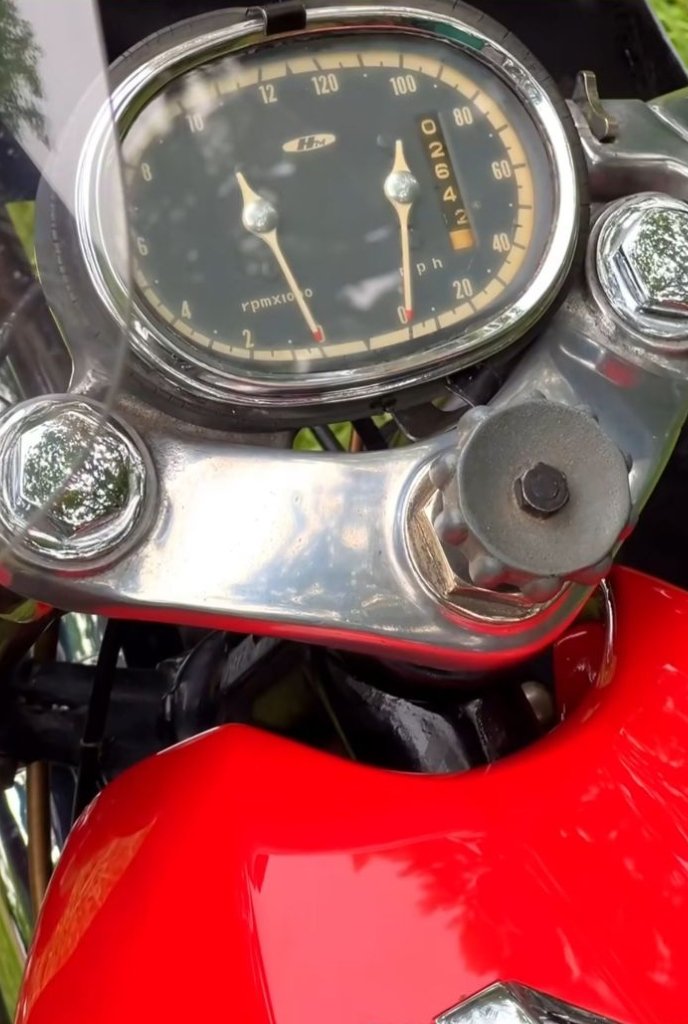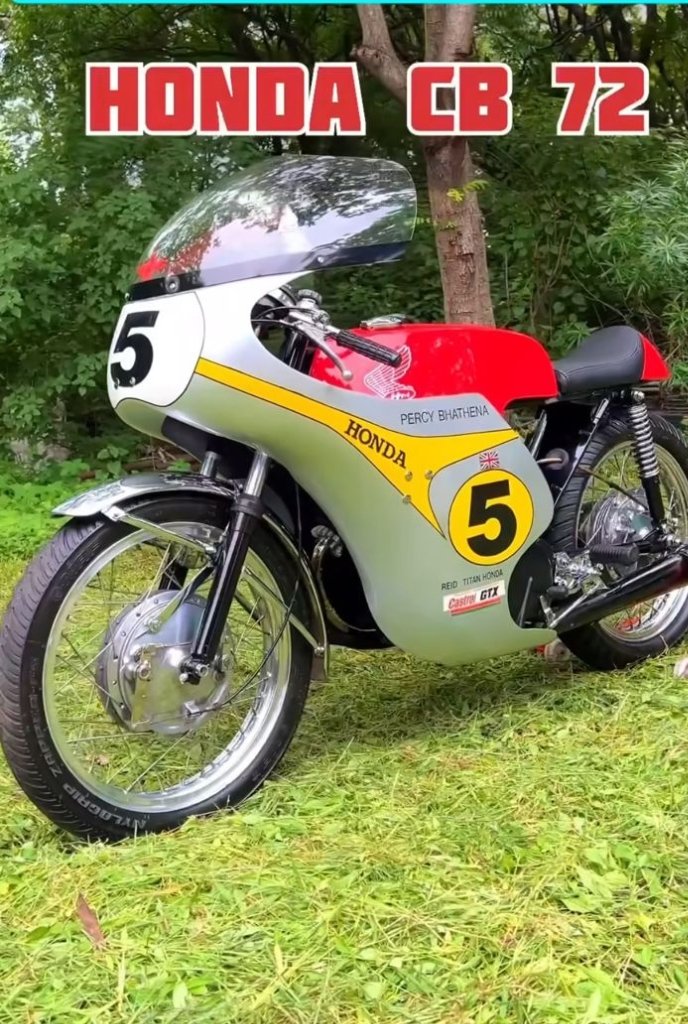Introduction: The Birth of a Legend
In the early 1960s, Honda was making waves in the global motorcycle industry. While the company had already gained a reputation for reliable commuter bikes, it sought to dominate the performance motorcycle market as well. This ambition led to the creation of the Honda Bike CB72, a 250cc parallel-twin motorcycle that became a game-changer.
Launched in 1960, the CB72 (also known as the Dream CB72 Super Sport) quickly gained popularity due to its race-inspired frame, powerful engine, and advanced engineering. It was lightweight, fast, and handled exceptionally well, making it a top choice for motorcycle enthusiasts and racers alike.
Even today, the Honda Bike CB72 remains a highly sought-after classic, admired for its unique instrument panel, sleek design, and timeless performance. This article explores the history, engineering, design, performance, racing heritage, and lasting impact of the Honda CB72, covering every detail of this iconic machine.
Honda CB72: A Motorcycle Ahead of Its Time
During the 1950s, the motorcycle industry was dominated by British manufacturers like Triumph, Norton, and BSA. These brands produced powerful motorcycles but often lacked the precision engineering and reliability that Honda was known for.
Honda saw an opportunity to introduce a high-performance yet reliable motorcycle that could challenge these established players. The CB72 was the perfect answer to this challenge.
Unlike the traditional pushrod engines used by British manufacturers, Honda equipped the CB72 with a single overhead camshaft (SOHC) engine, which was considered cutting-edge technology at the time. This high-revving engine, combined with a lightweight frame, superior suspension, and exceptional handling, made the CB72 one of the best 250cc motorcycles of its era.
Design & Features: A Blend of Sportiness and Elegance
The Honda Bike CB72 was a masterpiece of design and engineering. It was built for performance, durability, and style, setting new standards in motorcycle design.
Unique Instrument Panel & Dashboard
One of the most striking features of the CB72 was its instrument panel, which had a futuristic, car-like display.



- Combined Speedometer & Tachometer: Unlike most motorcycles of the time, which had separate speed and RPM gauges, the CB72 featured a single, sleek display unit for both.
- Easy-to-Read Layout: The RPM gauge was on the left, the speedometer was on the right, and an additional fuel indicator was placed for convenience.
- Modern Aesthetic: The compact, round display gave the CB72 a sophisticated, high-tech look.
Even today, enthusiasts believe that modern Honda motorcycles should bring back this unique display.
Advanced Frame & Chassis Design
Unlike many motorcycles of its time, which used heavy and outdated frames, the CB72 featured a tubular steel spine frame, inspired by Honda’s Isle of Man TT racing bikes.
✅ Increased Rigidity: Provided better stability and control at high speeds.
✅ Lightweight Construction: Made the bike more agile and responsive.
✅ Sleek and Sporty Design: Gave it a race-ready look, distinguishing it from commuter motorcycles.
This sporty frame and chassis design contributed significantly to the bike’s success in racing.
Performance & Engine: The Heart of the CB72
250cc Parallel-Twin Engine
The Honda Bike CB72 was powered by a 247cc air-cooled, twin-cylinder engine, capable of producing 24-25 horsepower at 9,200 RPM.

🔹 Single Overhead Camshaft (SOHC) Technology: This was uncommon in 250cc bikes at the time and helped the CB72 rev higher and run smoother.
🔹 360-Degree Crankshaft: Gave the engine a distinctive sound and improved power delivery.
🔹 Twin Carburetors: Optimized fuel delivery, enhancing power output and throttle response.
🔹 4-Speed Manual Transmission: Provided smooth gear shifts and efficient power distribution.
With these advanced engine features, the CB72 could reach top speeds of 90 mph (145 km/h)—an impressive achievement for a 250cc motorcycle in the 1960s.
Suspension & Braking System
To match its powerful engine, Honda equipped the CB72 with a high-quality suspension and braking system.
✅ Telescopic Front Forks: Provided excellent shock absorption, ensuring a smooth ride.
✅ Swingarm Rear Suspension: Offered better control and stability during high-speed turns.
✅ 8-Inch Drum Brakes (Front & Rear): Delivered strong stopping power, making the bike safer at high speeds.
These features made the CB72 one of the best-handling motorcycles of its time.
Racing Legacy: The CB72’s Dominance on the Track
The Honda Bike CB72 wasn’t just a road-going motorcycle—it was a race-winning machine. Many racers modified their CB72s for competitive racing, and the bike saw significant success in club-level competitions and endurance races.

🏆 Inspired by Honda’s Isle of Man TT race bikes, the CB72 had direct racing DNA.
🏆 Its lightweight chassis & powerful engine made it a serious competitor on the track.
🏆 Many private racers used the CB72 for competitions, proving its racing capabilities.
Even today, in vintage motorcycle racing events, restored CB72s can still be seen competing—a testament to their incredible durability and performance.
CB72 vs. Modern 250cc Motorcycles: How Does It Compare?
While technology has advanced, the CB72 still holds its ground against modern motorcycles in many aspects.
| Feature | Honda CB72 (1960s) | Modern Honda CBR250R |
|---|---|---|
| Engine | 247cc Parallel-Twin (SOHC) | 249cc Single-Cylinder (DOHC) |
| Power Output | 24-25 HP | 27-30 HP |
| Frame Type | Tubular Steel Spine | Diamond Frame |
| Top Speed | ~90 mph (145 km/h) | ~100 mph (160 km/h) |
| Brakes | Drum Brakes | Disc Brakes |
Even though modern motorcycles offer better technology and safety features, the CB72 had a unique charm and character that is hard to replicate.
The Honda CB72 as a Collector’s Dream
Today, the Honda Bike CB72 is a highly valued classic among motorcycle collectors. A well-maintained CB72 can fetch thousands of dollars at auctions, particularly if it has original components and paintwork.
✔️ Timeless Design: Still admired by vintage motorcycle enthusiasts.
✔️ Historical Significance: One of Honda’s most influential motorcycles.
✔️ Riding Experience: Offers a raw, mechanical feel missing in modern bikes.
If you ever get the chance to see a CB72 in person, consider yourself lucky—it’s a true piece of motorcycling history.
Conclusion: The Honda CB72’s Lasting Legacy
The Honda Bike CB72 was more than just a motorcycle—it was a revolutionary machine that changed the motorcycling world forever. Its race-inspired engineering, powerful engine, and stylish design made it a legend in the industry.
Even today, the CB72 continues to inspire motorcycle designs, and its legacy remains strong among vintage bike enthusiasts. Whether you’re a rider, a collector, or just an admirer of classic motorcycles, the Honda Bike CB72 will always be remembered as a symbol of innovation, performance, and style.
Would you like to see Honda bring back the CB72’s unique design? Let us know in the comments! 🚀
